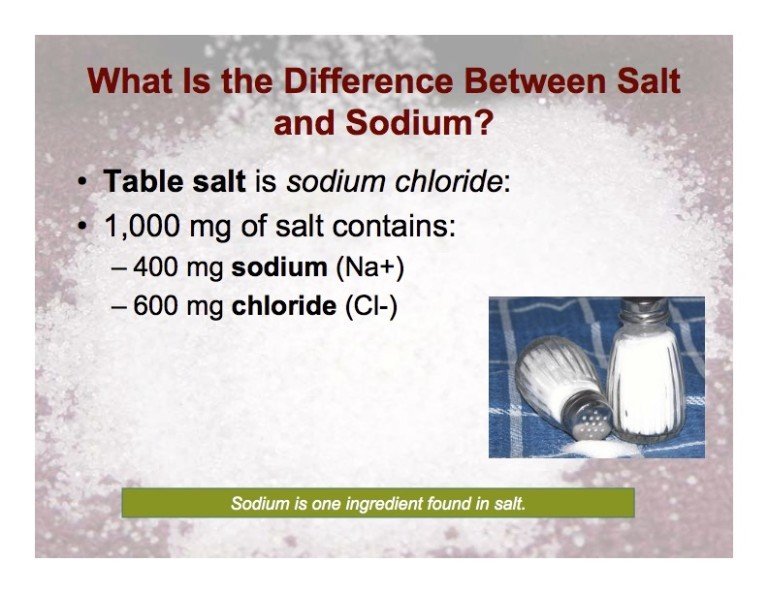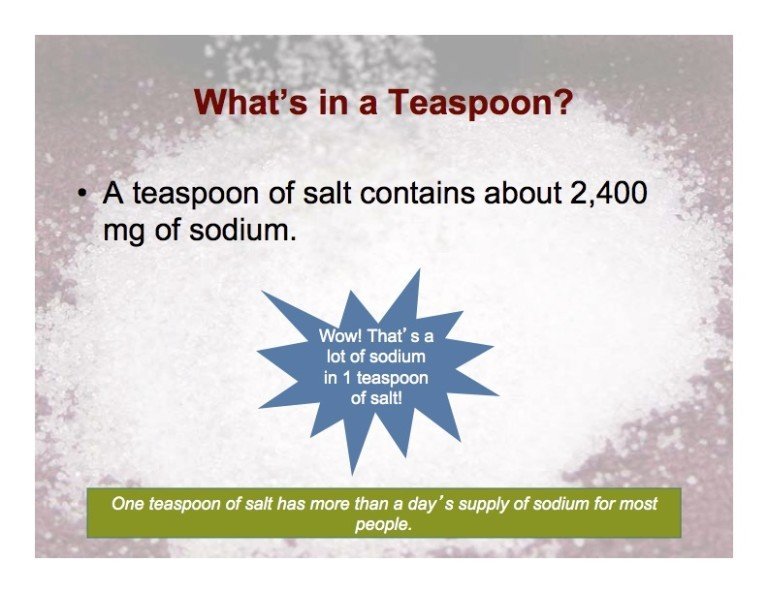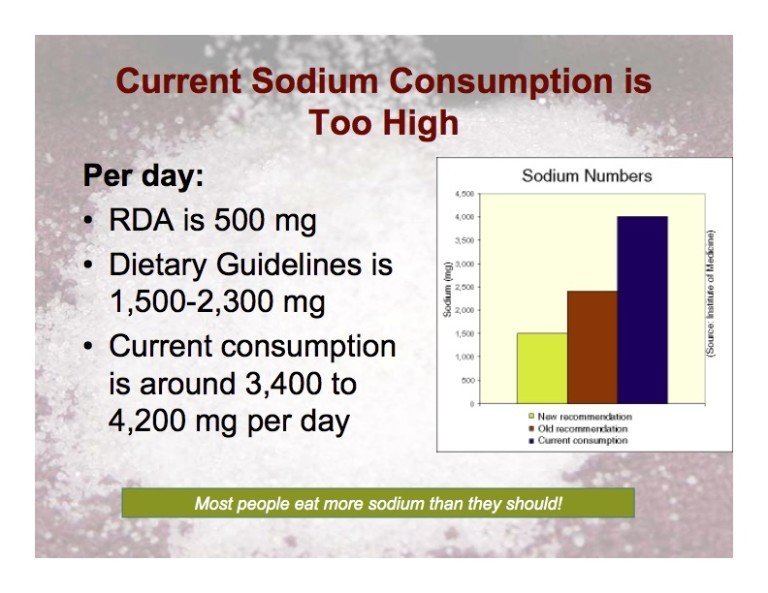Sodium Savvy
I've been updating a lot of our materials to reflect the new information put forward by the 2015-2020 edition of the Dietary Guidelines for Americans, and I recently stumbled upon an old fan favorite: Sodium Savvy.Sodium Savvy is a comprehensive PowerPoint presentation that goes into great detail about the impact that sodium has on our lives. With fantastic scientific research and memorable images, this presentation is one of the most popular nutrition education resources we make.So today I'd like to share a free snapshot with you! Let's take a look at the beginning of this show... One of the most common questions I hear about sodium is "how it is different from salt?" So here's the answer: sodium is a component of table salt. Table salt, also known as sodium chloride, is made up of 40% sodium and 60% chloride. Sodium is also used on its own, often as a preservative in canned, packaged, and frozen foods.
One of the most common questions I hear about sodium is "how it is different from salt?" So here's the answer: sodium is a component of table salt. Table salt, also known as sodium chloride, is made up of 40% sodium and 60% chloride. Sodium is also used on its own, often as a preservative in canned, packaged, and frozen foods. Most of the salt that people eat comes from prepared or restaurant foods, not the salt shaker. That said, a teaspoon of salt contains about 2,400 mg of sodium. Since the Dietary Guidelines for Americans recommend that "Healthy eating patterns limit sodium to less than 2,300 mg per day," people should consume less than 1 teaspoon of salt each day. Now, how does that compare to current levels of consumption?
Most of the salt that people eat comes from prepared or restaurant foods, not the salt shaker. That said, a teaspoon of salt contains about 2,400 mg of sodium. Since the Dietary Guidelines for Americans recommend that "Healthy eating patterns limit sodium to less than 2,300 mg per day," people should consume less than 1 teaspoon of salt each day. Now, how does that compare to current levels of consumption? The stats from the latest edition of the Dietary Guidelines for Americans are truly mind-boggling. I want you to hear it straight from the source:
The stats from the latest edition of the Dietary Guidelines for Americans are truly mind-boggling. I want you to hear it straight from the source:
"Average intakes for those ages 1 year and older is 3,440 mg per day. Average intakes are generally higher for men than women. For all adult men, the average intake is 4,240 mg, and for adult women, the average is 2,980 mg per day."
Isn't that shocking? Most people should consume no more than 2,300 mg of salt per day (1,500 if they have hypertension or prehypertension), and yet many get upwards of 3,000 mg per day! The Dietary Guidelines also remind us that "Only a small proportion of total sodium intake is from sodium inherent in foods or from salt added in home cooking or at the table. Most sodium consumed in the United States comes from salts added during commercial food processing and preparation."So, why is this overconsumption of sodium a public health concern? The member-exclusive post Sodium Savvy: Why Worry About Sodium Intake? offers an answer, along with more slides from this presentation. Don't miss it!And if you liked today's slides, feel free to download a free PDF version to use as you see fit. Or consider getting the whole show!




